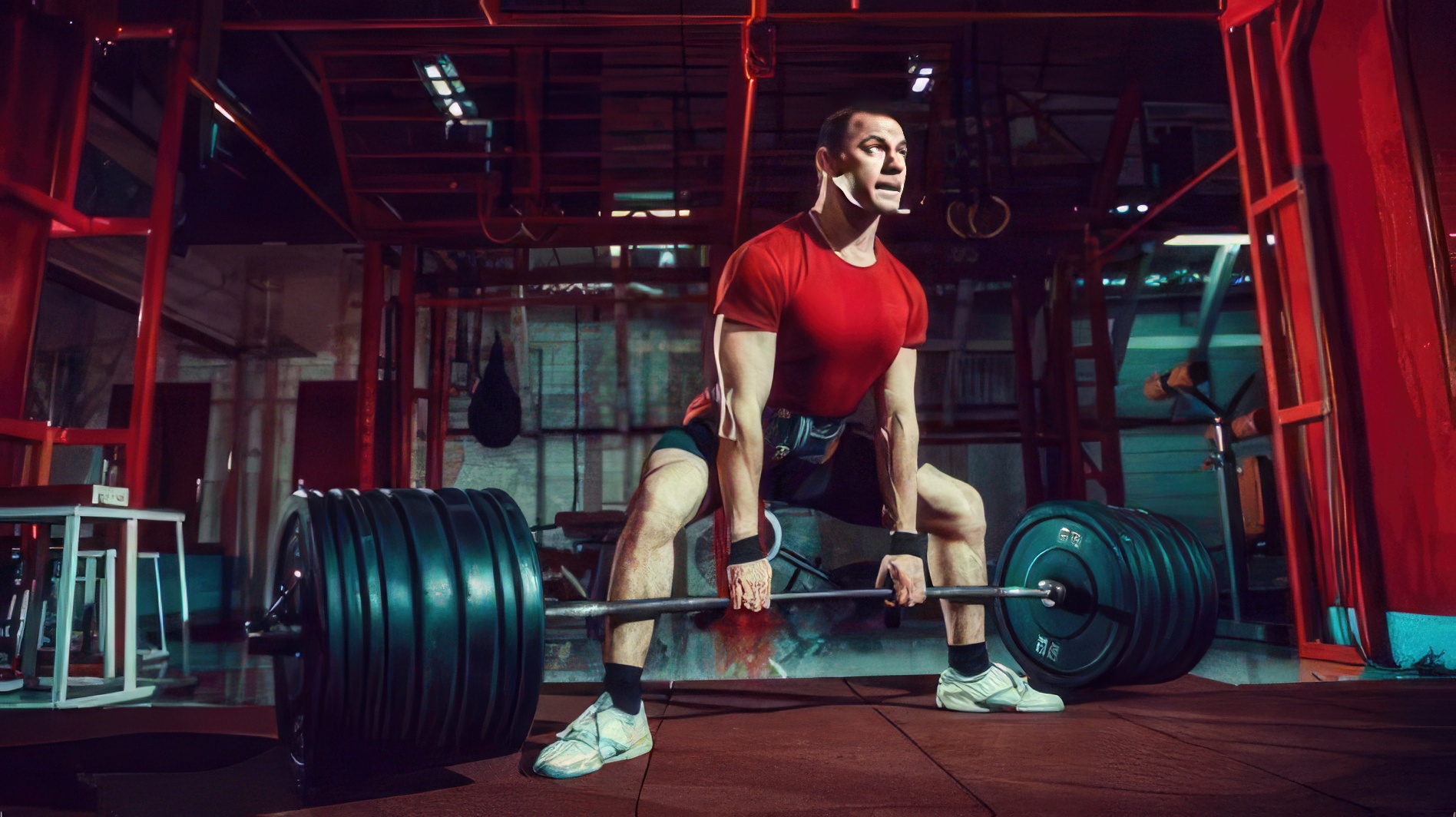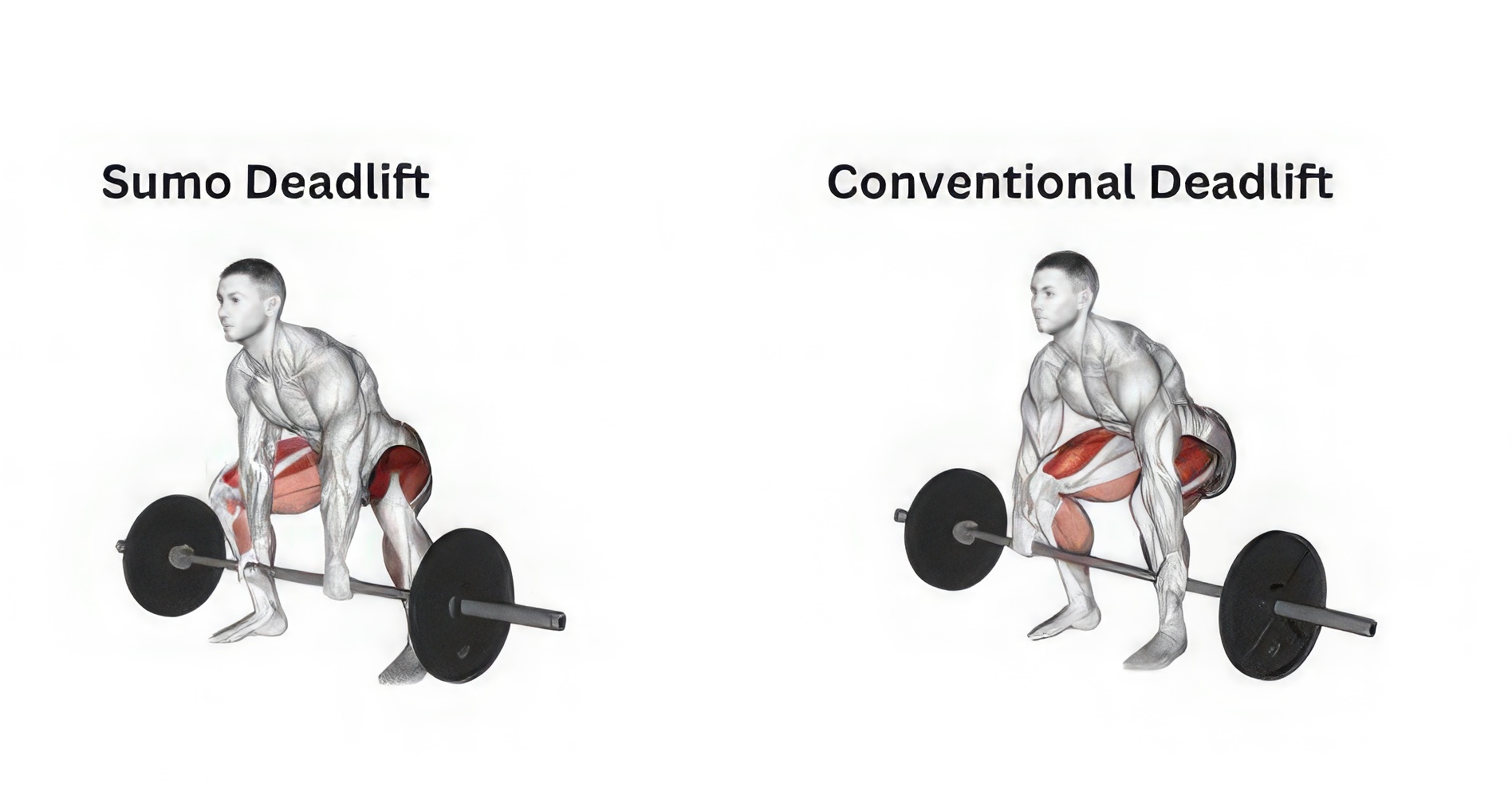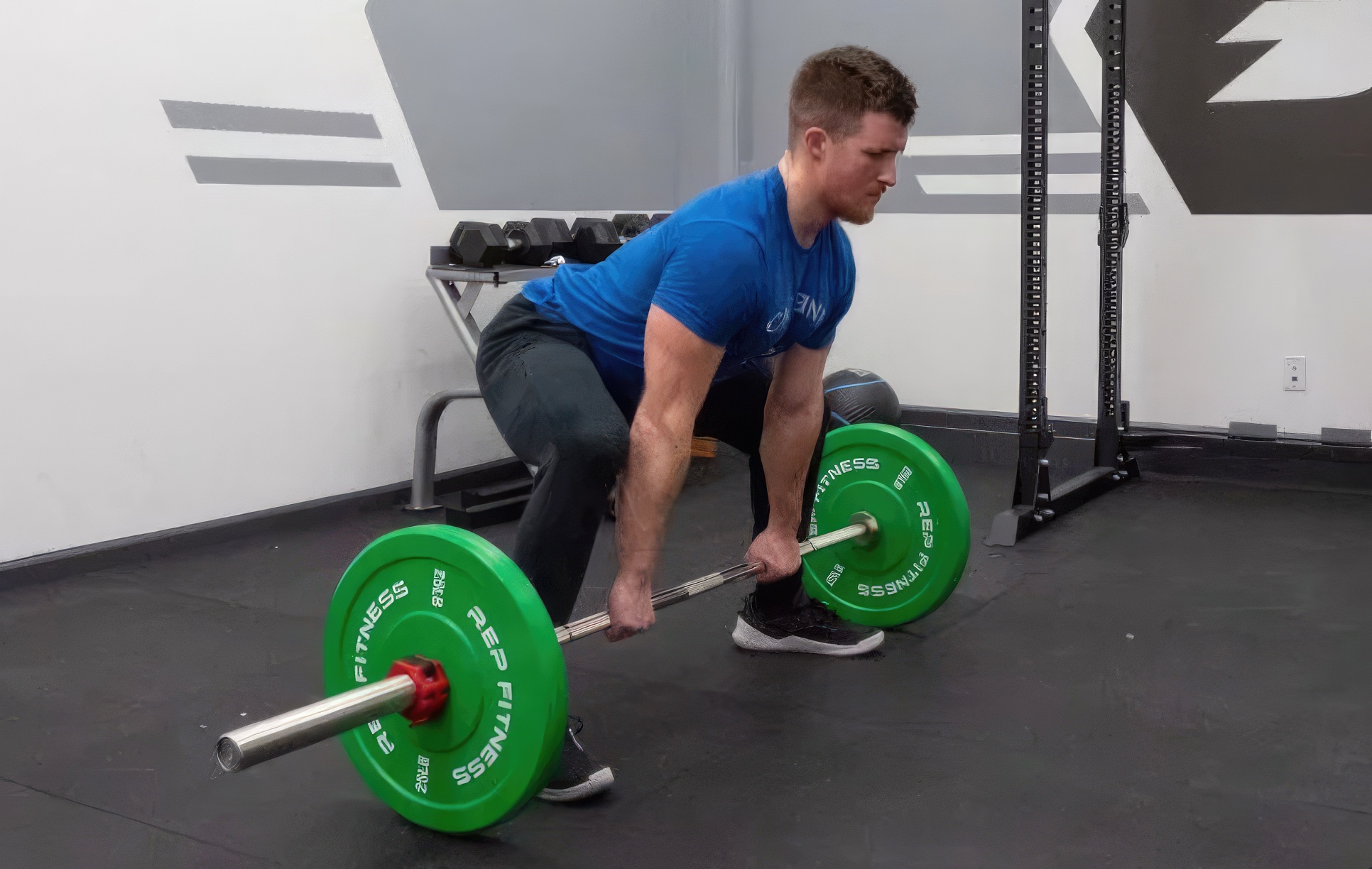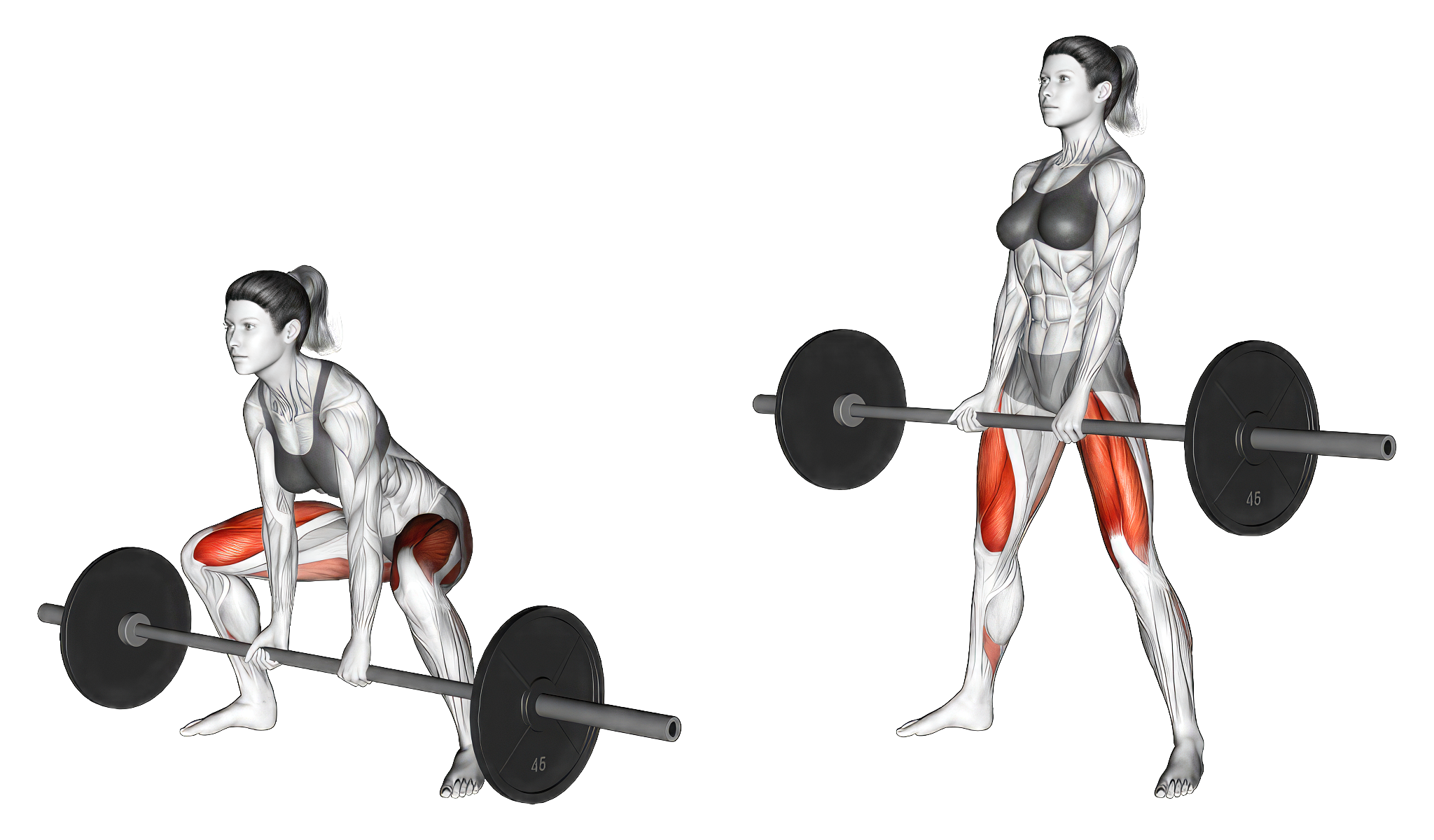
The sumo deadlift is one of the most popular deadlift variations. Many fitness enthusiasts are attracted to this variation because it is good for the glutes and thighs. This type of deadlift is also ideal for those with certain mobility limitations.
If you do it right, you can expect safer deadlifts and great benefits for overall body strength.
Sumo Deadlift Explained

This is a variation of the deadlift with the weight lifted off the ground and the feet wider than usual. It would be best if you placed your feet at least wider than your shoulders. Make sure the toes point slightly outward to perfect this deadlift.
Then what is the hand position? You need to place your hands on the inside of your knees, which is different from the usual position of placing your hands on the outside of your knees. There is a reason why this deadlift is called “sumo.” The name is due to the similarity of the leg position to the sumo stance (a Japanese wrestling sport).
How Is It Different With Regular Deadlift?

The main goal of the regular deadlift and sumo deadlift may be the same. But from my experience doing both, there are some differences including muscle tension, leg position, and lifting distance. Here are more details about the differences between these two deadlifts from my experience:
1. More intense pressure on different muscles
This is a deadlift that puts more stress on the glutes, and adductors or inner thigh muscles. It differs from the regular deadlift in that the hamstring and lower back muscles are more stressed.
2. Hand position and foot position
When you do this deadlift, you need to place your hands on the inside of your knees. Unlike the regular deadlift which needs to position the hands on the outside of your knees. It’s also different for the foot position, make sure the width of your foot position exceeds the width of your shoulders. As we know, conventional deadlifts have a fairly tight leg position.
3. Differences in weightlifting
The body is close to the barbell and upright making the weight-lifting distance not too high. Unlike the regular deadlift which makes you have to lift the barbell higher.
What Are The Benefits Of The Sumo Deadlift?
Compared to regular deadlifts, many people are considering sumo deadlifts. All because of the many extra benefits they can get, here are some of those benefits:
1. Extra strength for the adductors
If your main goal is to strengthen your adductors, then this is the deadlift that is recommended. Not only is it great for inner thigh muscle strength, but it can also further strengthen the gluteal muscles as well. Both play an important role in supporting our daily activities.
2. Safer for the lower back
If you’re worried about your lower back when doing deadlifts, the sumo deadlift is a good one to consider. You’ll be lifting with your body upright, making it safer from lower back injury. When doing regular deadlifts, the chances of such injuries can be higher as the pressure on the lower back is higher.
3. Uses a lot of body muscles
Another benefit is that it increases your overall body strength. The main focus is on certain muscles but in practice, it uses the whole body. You’ll rely on your core, legs, and back muscles when performing this deadlift.
4. Flexible for specific people
Some people have wide hips, and this deadlift variation is more comfortable for them. The ankle position can also be made more flexible than in other deadlifts. If you leave your feet open, it can also support your mobility during practice.
How To Do Sumo Deadlift Properly?

To get the most out of these benefits, you need to perform these deadlifts correctly. So what is the best technique in sumo deadlift? Check out the points below:
1. Initial preparation for all positions
Make sure your head is in line with your spine and look forward. Make sure your hands are positioned on the inside of your knees for this deadlift. When gripping the barbell, make sure to keep your arms straight. Then what about the hips?
Make sure your hips are bent to the point of leaning slightly forward but keep your back properly straight. If your back is rounded, the risk of injury is greater. Make sure your hips are not higher than your shoulders, but higher than your knees.
To perfect the sumo deadlift, the feet should be in a position wider than the shoulders. Turn your toes outward about 35 degrees. The barbell should be close enough to your feet that the bar is just above the center of your feet. That’s the best practice you can work on for this deadlift.
2. Barbell lifting and lowering
Push your hips forward and press through your heels to lift the barbell. Many people get this deadlift wrong because they only rely on their lower back when lifting weights. Once from your standing position, maintain good control when lowering the barbell.
Good control in this deadlift is a straight back. Keep that position until the barbell is completely down.
What Are The Common Mistakes?
To get the most out of this deadlift, you should also avoid certain mistakes. Usually, many people bend their backs too much and that’s bad, especially for the lower back. Another mistake is not relying on the hips and leg muscles optimally.
This mistake can make the movement less efficient and more likely to cause injury. The feet should also not be too wide or too narrow. Why? Because the risk of injury is more likely and the deadlift movement becomes less effective.
FAQs
What is the sumo deadlift?
This is a deadlift variation that has low stress on the lower back. The main focus is on the adductors and glutes with a wider leg spread.
Is a sumo deadlift better than a regular deadlift?
Regular deadlifts have a higher risk of injury than these deadlifts. Those who don’t want to overload their backs or have back problems can consider this deadlift.
How to properly perform a sumo deadlift?
Make sure your hands are still within feet distance and your feet are slightly wider than your shoulders. Use your feet to press against the floor and lift the barbell with a focus on the strength of your glutes and hips.
How to minimize injury in sumo deadlifts?
Keep your back straight and consider gradual weight levels, don’t use too much weight at the beginning of the session. If you’re not feeling confident about this sumo deadlift, consider trainer supervision.
Learn how to start your bodybuilding career.

Guntur is a bodybuilding and powerlifting enthusiast. He is also the main author of this blog https://learn-bodybuilding.com/
Guntur also works as a Personal Trainer in his town.
In his free time, he likes to learn new languages and reading.
You can contact him from this website’s Contact Page.